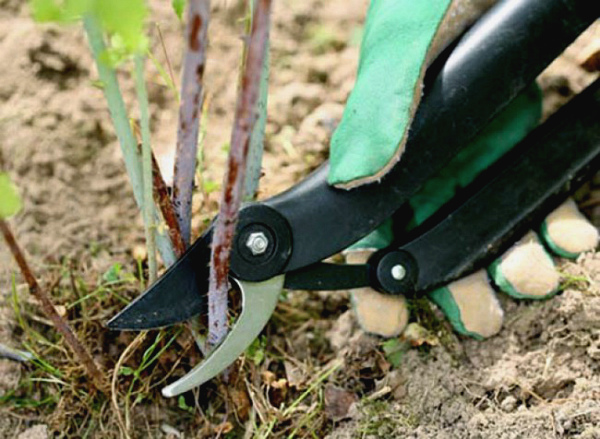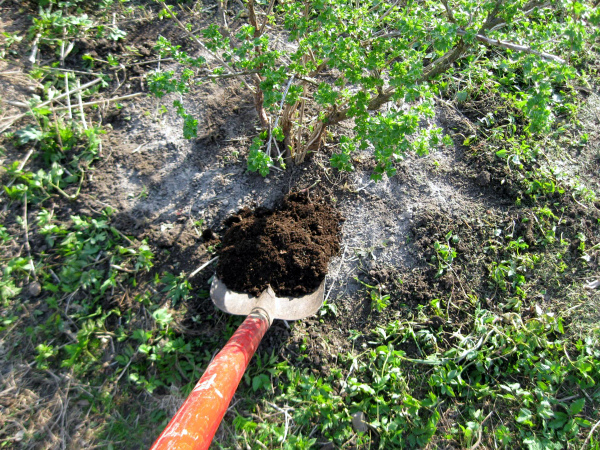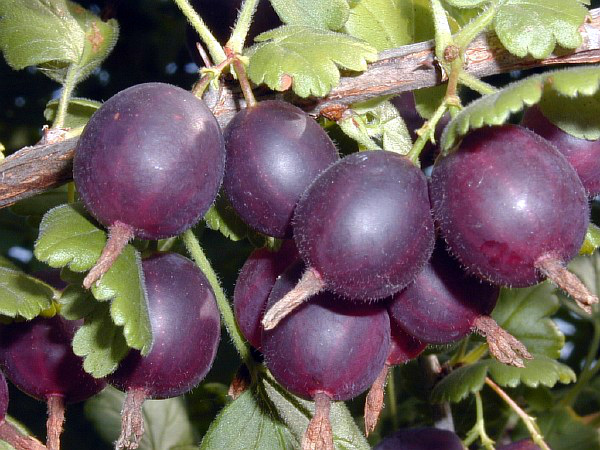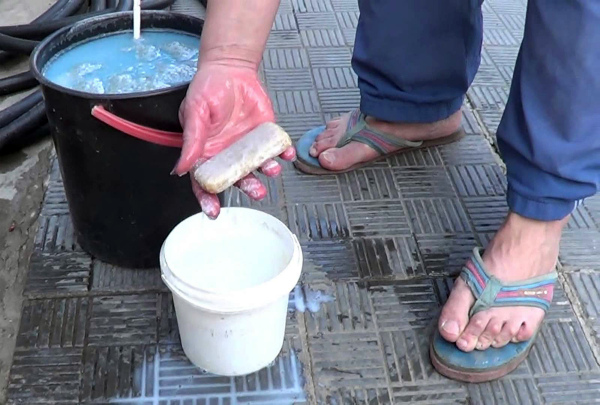How to get rid of white bloom on gooseberries
What is white bloom
Powdery mildew or spheroteka is a fungal disease that develops in high humidity with the onset of spring heat. The main difficulty in the fight against this disease is that the fungus easily tolerates low temperatures and hibernates in plant debris, topsoil, and also on infected bushes.
Spores of the fungus spread throughout the aerial part of the gooseberry. At first, it is a simple white coating that is easily erased. Over time, it darkens, acquiring a brown color and a denser texture. Leaves and shoots are deformed by curling and then wither and fall off.
However, in addition to powdery mildew, white spots on gooseberry leaves can be a symptom of septoria. The first signs of the disease appear at the end of May on gooseberry leaves. At first, these are gray spots with a brown or yellow rim, which eventually turn into a white bloom with a dark rim. By August, the leaves affected by bloom fall off, the growth of young shoots is inhibited, and the berries grow deformed and with a changed taste.
How to warn
Preventing illness is the best way to deal with it. This method works very well with fungal diseases. The risk group includes adult plants that have been growing on the site for more than a year, as well as bushes weakened, for example, by transplanting. Young seedlings, especially hybrid varieties, are more resistant to disease.
Gooseberries should be pruned first. It is carried out in the spring, before the first buds appear, and in the fall, after the harvest and leaf fall. Dead, broken or diseased branches take away many resources and micronutrients from the bush, significantly weakening. The branches must be burned so as not to contribute to the cultivation and reproduction of the fungus, and the cuts on the bush must be covered with lime to protect the plant from infections.
In the fall, when the leaves fall from the gooseberry, they need to be raked and burned. Spores of the fungus may remain on them, which will grow with the first spring rays of the sun. During the growing season, all withered leaves and shoots affected by plaque or other pathological neoplasms must also be removed and burned.
In the spring, as soon as the last frost has passed, but before the buds appear, you need to pour the gooseberry bushes with water heated to 80 ºC. This will help not only improve the immunity of the plant, but also save it from some insect pests.
In order not to burn yourself, pour water into the watering cans and thoroughly water each bush, as well as the circle near the trunk. For greater efficiency, you can add 2 tablespoons of potassium permanganate to the water.
Fertilizers play an important role in enhancing the immunity of the gooseberry and improving its vegetation. If you add a mixture of potassium and phosphorus to the soil in the spring, you will noticeably reduce the likelihood of disease.Whereas nitrogen fertilizers are more likely to harm the gooseberry, since it will go into an active set of green mass, while delaying fruiting, so that the berries will not have time to ripen by time. This will noticeably weaken the plant before fungal invasion.
Of course, as a prevention of diseases caused by a fungus, planting varieties resistant to powdery mildew and septoria is suitable. Among them are: "Kolobok", "Ural grapes", "Kuibyshevsky", "Grushenka", "Finnish", "Senator", "Harlequin", "African", "Houton", "Masheka", "Jubilee". Strains without thorns are at a lower risk. There are also varieties that are most susceptible to disease: "Seedling Lefort", "Date", "Triumphal", "Golden light", "Prune", "Russian". If possible, do not plant them if your area is high in humidity or if there are plants that suffer from powdery mildew or septoria.
How to fight
What to do if white bloom appears on gooseberry leaves? Start saving landings without delay!
First of all, for treatment, use the drug "Topaz", which has established itself as the best remedy for powdery mildew and septoria. It should be diluted in accordance with the instructions, and the bushes must be processed twice - once before the gooseberry blooms and again after it has faded.
Another drug serves as a more potent analogue of the Bordeaux mixture, it is called "HOM". Bushes need to be processed before the gooseberry begins to bloom. A big plus of this drug is that it can be used in combination without fear for the health of the plant. So, for example, you can mix 40 g of "HOM" and an ampoule of "Fufanon" in 10 liters of water, and then spray the bush.
A good way to deal with plaque and prevent it from settling on healthy leaves is with a solution of laundry soap and copper sulfate. You will need 150 g of grated soap, 20 g of copper sulfate and 10 liters of water. First dissolve the vitriol in hot water, and then add a cool soapy solution to it. You should have a bluish solution without soap flakes. Spraying should be done immediately after flowering or when the berries are set.
You can also mix 2 tablespoons of baking soda and 50 g of grated soap in 10 liters of water. The bushes, the trunk circle are watered with this solution, and plaque is also washed off from the leaves.
Ash infusion has proven itself well as a medicine. To prepare it, stir 3 kg of wood ash in 10 liters of hot water and leave to infuse for 24-28 hours. After it is filtered and sprayed on the bushes every 10 days. One bush should consume at least 3 liters of solution.
Video "Gooseberries and Powdery Mildew"
This video is about gooseberry diseases, which are accompanied by a white bloom. You will learn how and how to properly handle a diseased bush.





